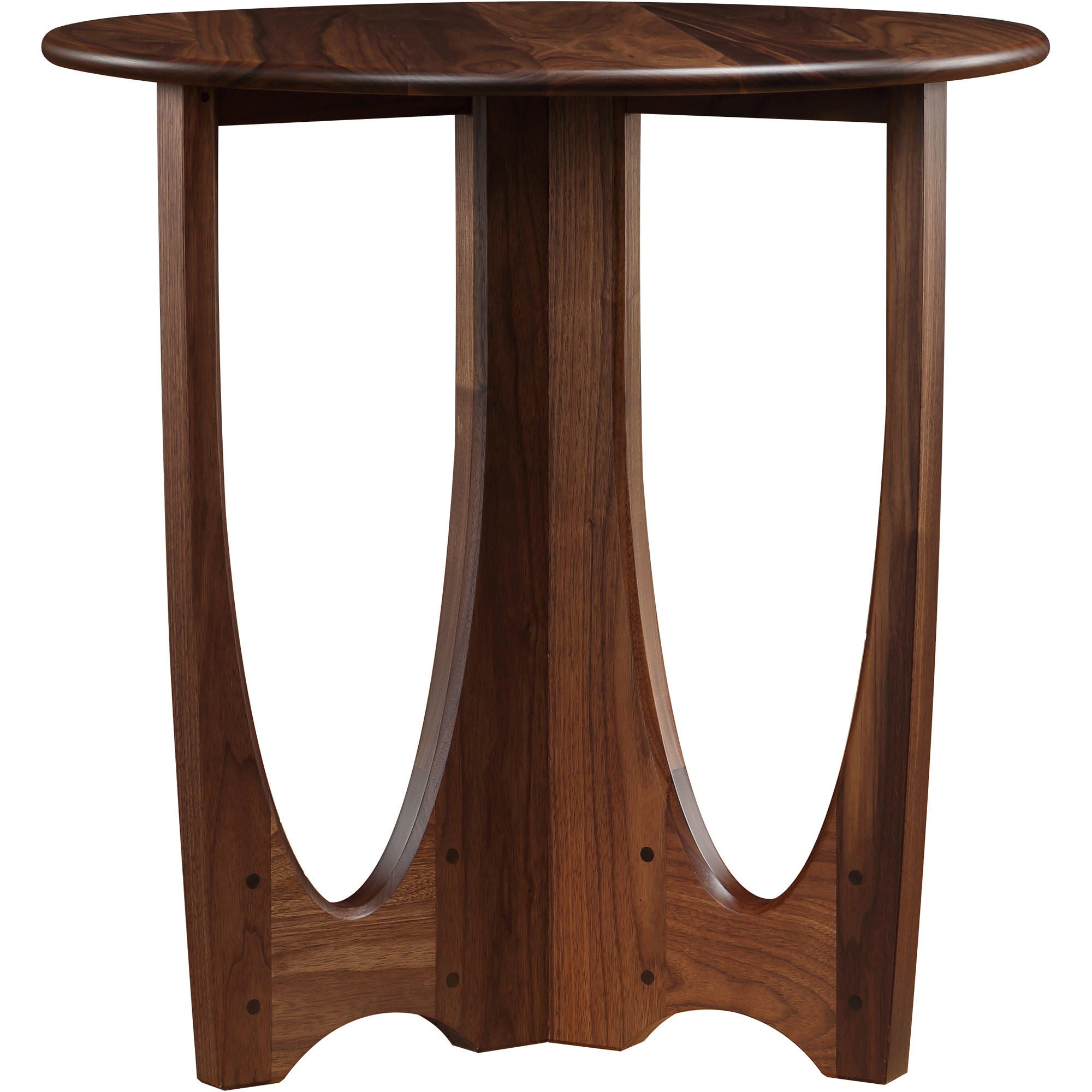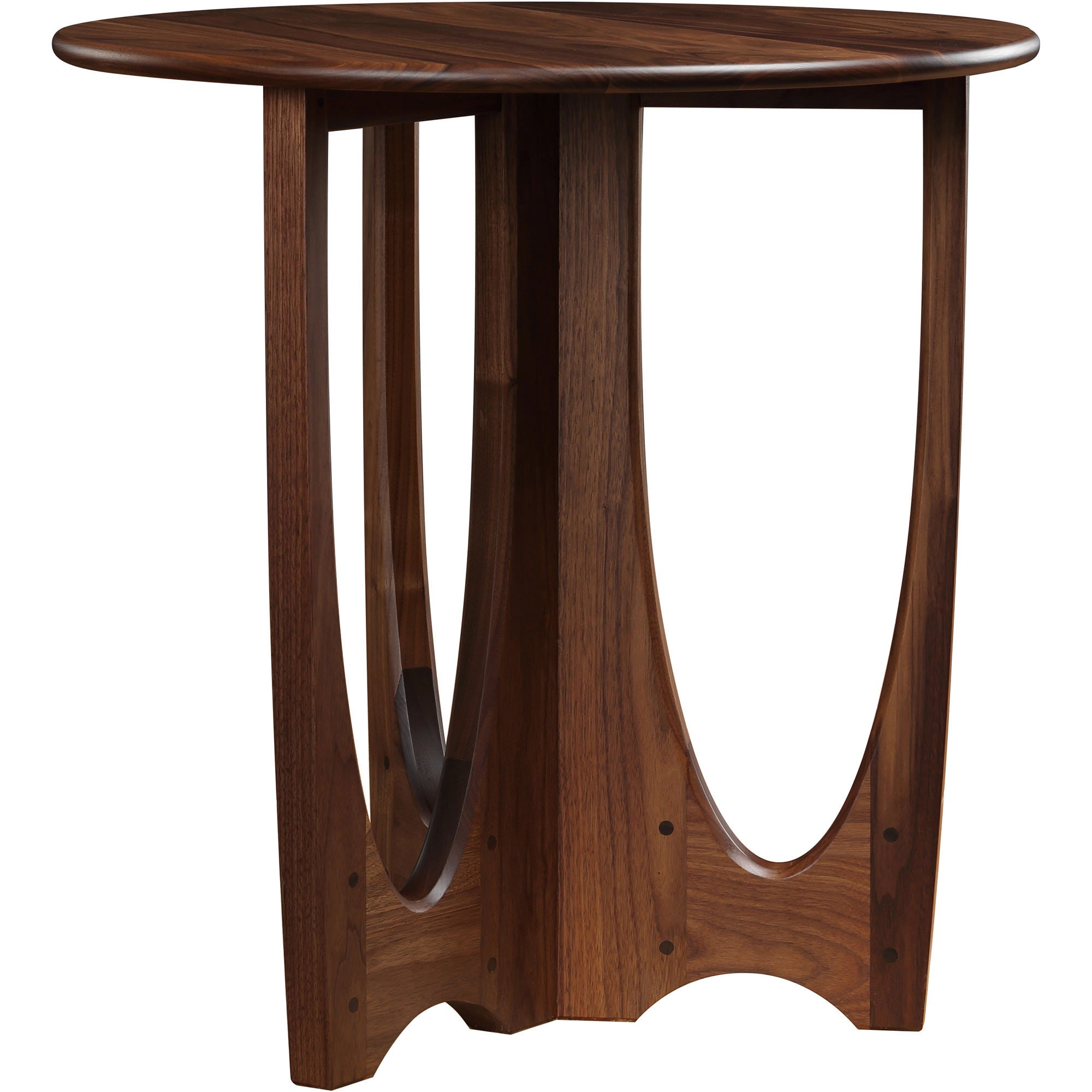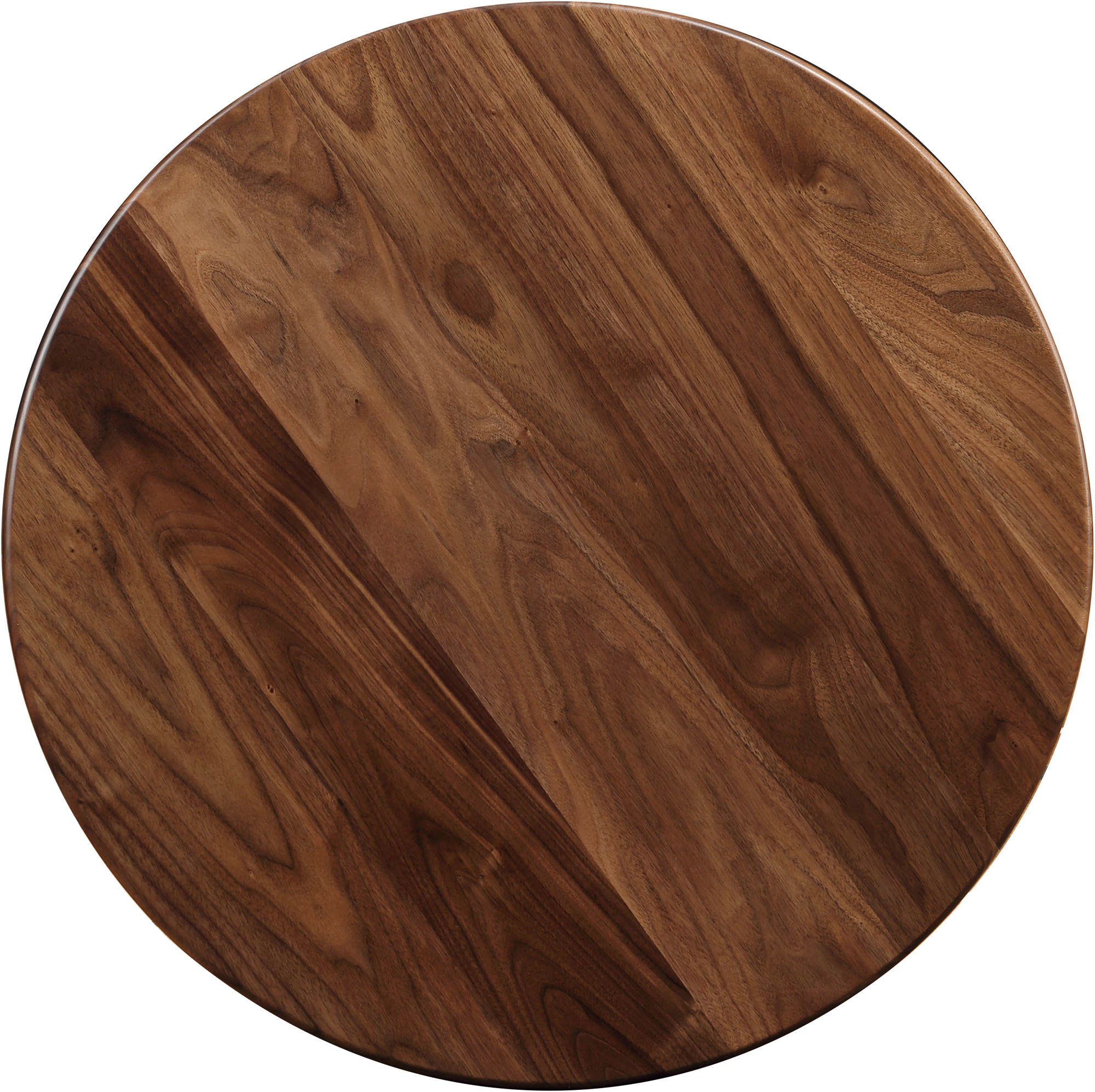Photo Gallery


The Walnut Grove Drink Table blends mid-century modern design elements with solid walnut construction. Its elliptical shapes in base adds a unique touch to the 26" round table top, making it a stylish and functional addition to any space. Crafted from high-quality wood, this lamp table boasts both durability and elegance.
- Solid american black walnut
A natural resource success
Gustav Stickley was a pioneer of the conservation ethic. He and allies like Theodore Roosevelt helped usher in new practices that transformed this country's use of natural resources. As a result, the North American hardwoods that today’s Stickley craftsmen sculpt into furniture are no longer scarce. They come from Appalachian and Adirondack forests, growing considerably faster than they are being harvested.
The timberlands that stretch from Kentucky to Maine are called the Great Northern Forest by arborists. U.S. Forest Service data show that the inventory of hardwoods across this region has grown from 77 billion cubic feet in the early 1950s to around 180 billion cubic feet in the early 21st century. That’s because annual hardwood growth (4.2 billion cubic feet) is double the volume of yearly lumbering (2.1 billion cubic feet). The premium white oak Stickley is most famous for can now be considered a renewable crop. Logs are pulled out of mixed forests on private lands one at a time as they peak before the tree can decline, die, and then rot or burn. This works like weeding a garden. Timber harvests bring light into the forest and allow a fresh succession of plant and animal species to flourish. Large amounts of carbon dioxide are captured and incorporated into a tree’s wood as it grows. When a tree dies a natural death, its carbon is returned to the atmosphere. But when wood is fashioned into furniture that will last many lifetimes—as Stickley furniture does—that carbon is locked away. About half the weight of any piece of wood furniture is carbon, representing a substantial volume of CO2.
The cherry that is the mainstay of several of their collections comes from Pennsylvania and our home state of New York—where the woods are expanding rather than contracting. In 1907, when Stickley first bloomed as a national company, and Gustav was worrying about over-timbering, New York had 10.8 million acres of forest, while Pennsylvania had 8.7 million. Today, forests cover 18.7 million acres in New York and 16.6 million in Pennsylvania. Stickley buys from small family-owned businesses that have carefully managed these woodlots with them for decades. This same healthy trend of new tree growth has unfolded across the forests of the Northern United States—which currently has 170 million acres of forested land versus 138 million acres in 1907. The United States represents 5 percent of the world’s population and 9 percent of its land area but can boast 10 percent (and rising) of the world’s forest land.
What about the tropical mahogany they use in some of their smaller collections? The first thing any purchaser of wood furniture needs to know is that rainforest destruction is primarily a function of poverty, poor farming methods, and bad economic management in developing countries. The furniture industry uses less than 5 percent of all harvested rainforest; poor residents burn a large proportion to clear plots for other uses. Stickley buys plantation-grown mahogany (mostly from Fiji), not clear-cut timber. Managed forests like those Stickley relies on can yield sustainable lumber indefinitely.
Re-use. Re-purposing.
Careful American production. Because they intentionally “overbuild” their products, they don’t break down and end up in a landfill. Decades and centuries from now, the solid-wood furniture they make in the Stickley workshops this week will still be going strong. A Stickley piece will likely continue to be used and cherished generations from now. Their focus on durability, quality, efficiency, and long-term results also permeates their manufacturing process.
As they build your rock-solid furniture, they do so in quite thrifty ways. They hand-sorted their wood with exceeding care and wasted very little. Employees can take home small trim blocks and other oak and cherry scraps to stoke their woodburning stoves during their brisk upstate New York winters. The remainder of the wood waste goes to a company that makes wood pellets for household heating. And their own large factory and office headquarters are heated entirely by sawdust collected throughout the workshop. (They work and live in the snowiest metro area in America!)
In late 2009, Stickley launched a significant effort to re-fit the lighting at their factory, main office, and showrooms. By replacing thousands of fixtures, they cut their energy use for lighting roughly in half. Their investment in more energy-efficient equipment reduced the company’s electricity consumption by approximately $145,000 annually.
Stickley has an extensive Blue Bin program for recycling paper, cardboard, and plastic bottles. Very little of anything is wasted. They like to see another factory with a thousand skilled workers—churning out large, highly finished products made by hand from variable natural materials—with dumpsters as small as theirs!
Efficiency and intelligent conservation are also central to Fine Upholstery. The down and feather fillings they use liberally are all-natural and environmentally friendly. The urethane foams in Stickley-made sofas and chairs contain the maximum percentage of soybean-derived polyols, reducing the percentage of petroleum-based inputs. Their urethane foams are PBDE-free, and their hardwood frames are formaldehyde-free.
A final way Stickley stays clean and efficient: They are one of the rare large furniture makers who continue to build primarily here in the U.S. Most competitors have outsourced the majority (or all) of their production overseas— to countries where pollution controls are weak, where wood sourcing is dubious, and where shipping the bulky finished products across oceans to the U.S. consumes a huge amount of fossil fuel. When you thumb through those glitzy catalogs of “discount designer” furniture, ask where their products are made. With what sort of environmental footprint? And what construction methods lurk beneath those slick finishes and fabrics? More than 90 percent of Stickley’s products are still made by their own craftsmen in their upstate New York and North Carolina workshops. They comply with strict federal, state, and local environmental regulations. They are a member of the Sustainable Furnishings Council. Stickley builds solid wood furniture the right way.
Stickley has lived " in harmony with nature” for over a century. They intend to do even better over the next 100 years.

For more than 120 years, Stickley has stood for unparalleled American craft. And their story began with three words: “Als Ik Kan”—to the best of my ability. Well-made furniture sets the scene for a lifetime of memories. Thoughtful and time-honored construction features are the Stickley Difference. Over 90% of their products are handcrafted by teams of talented local artisans and skilled workers in Upstate New York or Archdale, North Carolina. Some collections are produced at Stickley's own factory in Vietnam.
Read MoreProduct Videos








